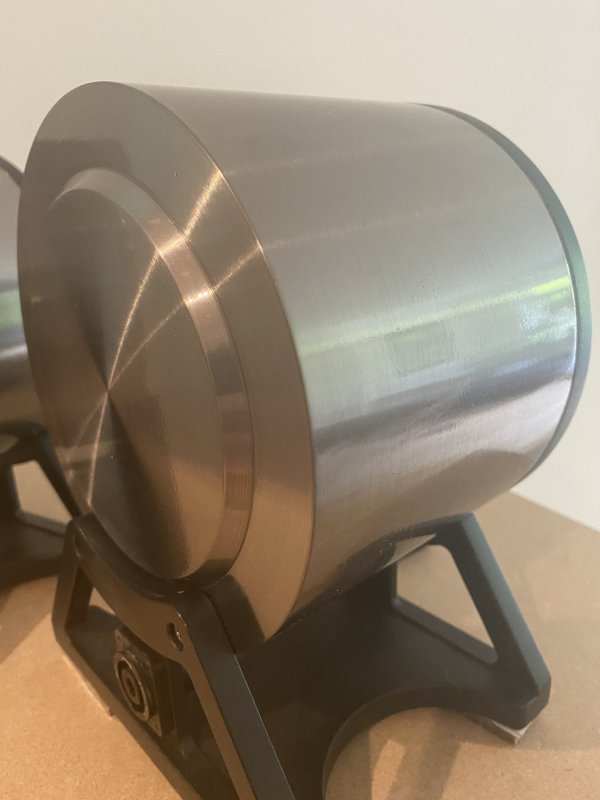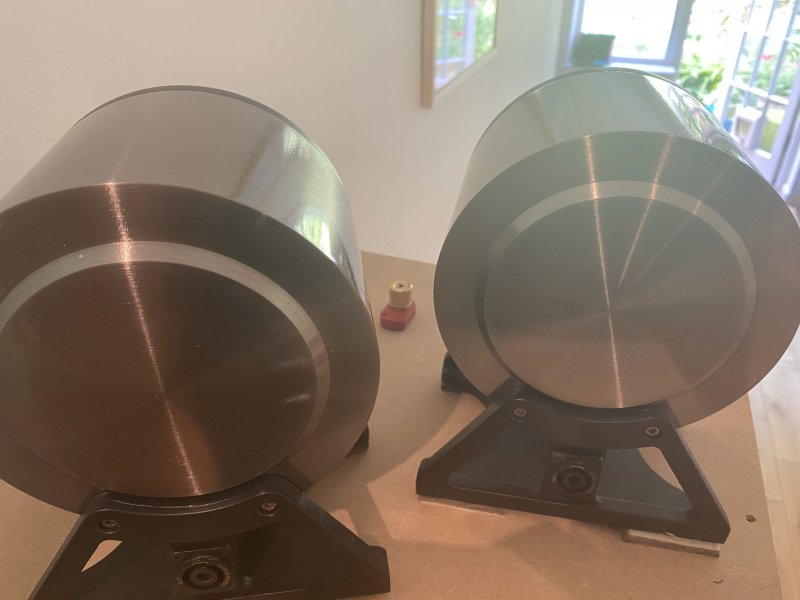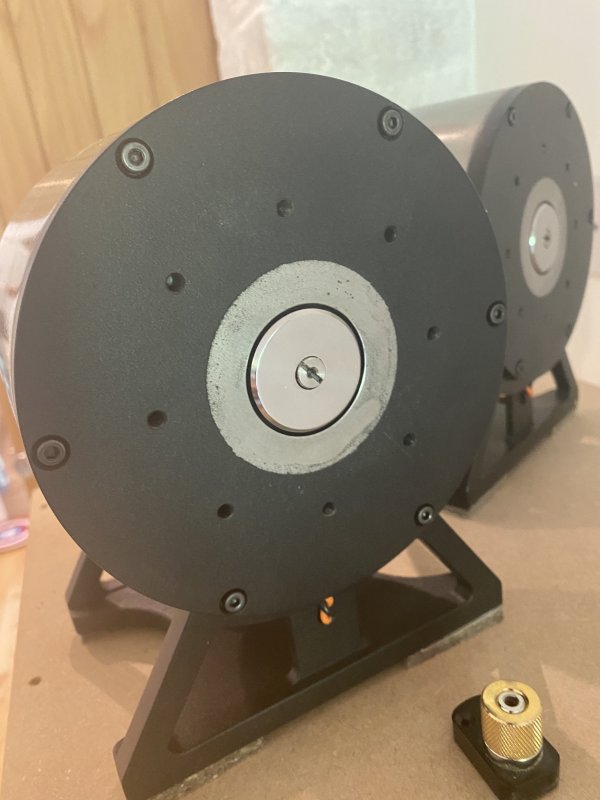How about trying AER BD5? Maybe takes you to heaven.Thanks Graham for the positive vibes. Yes I am pretty darned happy right now I’ll be honest.
Visit to Audiophile Bill to hear his horns project
- Thread starter spiritofmusic
- Start date
You are using an out of date browser. It may not display this or other websites correctly.
You should upgrade or use an alternative browser.
You should upgrade or use an alternative browser.
How about trying AER BD5? Maybe takes you to heaven.
They are *very* expensive indeed and I have other priorities to pay for right now alas.
Bill, to say I'm hugely anticipating the next visit is as understatement as they come. Your initial 170Hz horn is already my fave spkr of all time, consistent over every parameter including ones I didn't even know existed. For this 110Hz horn to take that initial slam dunk and add layers of additional goodness is hugely exciting.
My comparo for next visit will be my reasonably good memory of the Cessaro Liszt which main horns cross at 110-130Hz. If I get the visceral thrill listening to your horns that I got hearing the Liszts for the first time with the way more seamless and organic bass I'm already aware of from your design, I'll be beyond super impressed.
Marc, you should visit Bill with your memory of an actual piano performance of Liszt music on a stage. You may have a better comparo if referencing the sound of a real piano rather than the reproduced sound of a piano through a different speaker system.
Very nice bill congratulations.Got the AERs into the big boy horn. Have listened to quite a few LPs and tape to get a handle on things. Crossover point was dropped from 170 down to around 110hz for now.
Quite surprised with the findings so far:
> The big horn has increased the efficiency of the system quite noticeably. Not measured yet but would guess a couple of dB at least. The system sounds more dynamic and punchy as a result with a kind of effortless ease
> The upper treble is more extended and I can hear quite a lot more insight across the entire frequency spectrum.
> The upper bass / lower mid have a lot more texture and density. You notice most on male vocals or cello.
> The scale is overall larger in all dimensions
> The bass integration is more seamless. As a result the timing of the system has improved.
> Finally the tone of jazz drum kits has taken a leap. The skin of the drum can be heard and felt
View attachment 80060
But then we can all fight over your used BD4s...They are *very* expensive indeed and I have other priorities to pay for right now alas.
Better tune up your lathe skills Marc !Bill, to say I'm hugely anticipating the next visit is as understatement as they come. Your initial 170Hz horn is already my fave spkr of all time, consistent over every parameter including ones I didn't even know existed. For this 110Hz horn to take that initial slam dunk and add layers of additional goodness is hugely exciting.
My comparo for next visit will be my reasonably good memory of the Cessaro Liszt which main horns cross at 110-130Hz. If I get the visceral thrill listening to your horns that I got hearing the Liszts for the first time with the way more seamless and organic bass I'm already aware of from your design, I'll be beyond super impressed.
As you know I've just seen live piano, incl unaccompanied Pictures At An Exhibition, which is also a data point. The Cesarro is one also, re crossover spec.Marc, you should visit Bill with your memory of an actual piano performance of Liszt music on a stage. You may have a better comparo if referencing the sound of a real piano rather than the reproduced sound of a piano through a different speaker system.
And the field coil monsters have landed. Beautifully engineered and built. I can’t believe the density of each of the motors. I will be building and internal shelf within the horn chamber in order to prevent any possible shearing forces against the frame!



I have ordered 2 variable linear power supplies to get me up and running. Should arrive tomorrow with any luck.



I have ordered 2 variable linear power supplies to get me up and running. Should arrive tomorrow with any luck.
Just wondering what is the impedance of your horn speaker?
Just wondering what is the impedance of your horn speaker?
BD4 is 6ohms. The woofer unit is 8ohms.
Best.
BD3 is 16 ohm. Big change from BD3 to BD4 in impedance.BD4 is 6ohms. The woofer unit is 8ohms.
Best.
BD3 is 16 ohm. Big change from BD3 to BD4 in impedance.
Indeed so!
What's the significance of this?
Different load on amplifier. The BD4 is a lot more sensitive than the BD3 anyway. I can drive BD4 to as much level as I want with 1.25 watts as you know.
I'm dumb, but I would have expected this to go the other direction, with the higher sensitivity driver having a higher impedance.Different load on amplifier. The BD4 is a lot more sensitive than the BD3 anyway. I can drive BD4 to as much level as I want with 1.25 watts as you know.
I'm dumb, but I would have expected this to go the other direction, with the higher sensitivity driver having a higher impedance.
There are systems with low sensitivity and high impedance such as Quad 57 and those with extremely high sensitivity and standard impedance such as the BMS compression drivers. The latter are available usually with your choice of 8 or 16 ohms with exactly the same sensitivity.
Indeed, I knew it wasn't a tight coupling, just that within a single manufacturer's product lineup I'd have thought it would go the other direction. I suppose I need to update the mental model and just assume no correlation.There are systems with low sensitivity and high impedance such as Quad 57 and those with extremely high sensitivity and standard impedance such as the BMS compression drivers. The latter are available usually with your choice of 8 or 16 ohms with exactly the same sensitivity.
Indeed, I knew it wasn't a tight coupling, just that within a single manufacturer's product lineup I'd have thought it would go the other direction. I suppose I need to update the mental model and just assume no correlation.
I am not sure as above my level of knowledge to be candid. I understand from Filip that there are many enhancements to get that additional sensitivity.
Nominal 6 and 8 ohms, but what are the deepest dips on both?BD4 is 6ohms. The woofer unit is 8ohms.
Best.
Similar threads
- Replies
- 2
- Views
- 1K
- Replies
- 2
- Views
- 423
- Replies
- 3
- Views
- 571
- Replies
- 8
- Views
- 991
| Steve Williams Site Founder | Site Owner | Administrator | Ron Resnick Site Owner | Administrator | Julian (The Fixer) Website Build | Marketing Managersing |















